
OR
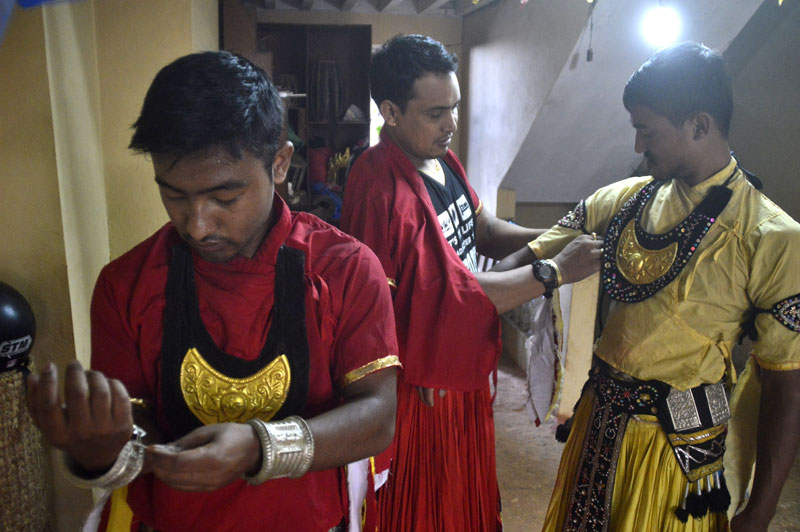
Like most 20 year olds in their second year of Certified Medical Laboratory Technician (CMLT) course, Rajan Bade too is bracing himself for his board exams. He is expecting this to be a tough one and has already organized several biology, physics and chemistry notes to memorize. However, that’s not the only test on his schedule. His community at Nagadesh, Thimi is keenly anticipating the closing act of Mahakali Gananitya and Rajan is set to reclaim his new-found role of playing God.
The last time, Nagadesh had the avatars of Mahakali, Mahalaxmi and Devi lead a parade of musicians, dancers and other mythical creatures through its ancient nooks and crannies, the year was 2009. Rajan was 13 years old and he still has a vivid memory of the excitement as well as the struggle of keeping up with the crowd as the dancing figures led the community’s four-day feast (bhoj) and celebrations. The history of this tradition can be traced back to the Malla era and since has always observed with much reverence and enthusiasm by the locals.
“You can’t help but fall in a trance with the beats and the movements. As a kid, I remember being blown away by the sheer power of the performance. The noise, the crowds and the characters were equally fascinating and terrifying. Every single year, I wondered how it must feel to be the one behind the mask,” shares Rajan.
He couldn’t quench his curiosity for seven long years. Financial problems had left the Nagadesh community organizers with no choice but to cancel the procession. However, when rumors began swirling that the Mahakali Gananitya would be revived this year, Rajan decided to try and make his 13 year old self’s dream come true. Surprisingly, all it took were a couple phone calls to the artists involved in the organizing committee and he was in. Nobody from his family had ever participated in this kind of event before, but still, they all had the same word of caution: it will be difficult.
Bhakta Bahadur Gaju, 80-year-old resident of Nagadesh has taken on the responsibility of teaching this year’s performers the Mahakali Gananitya. He believes the most important factor for those looking to take on these coveted roles of God and Goddess is their will and their heart.
“The steps aren’t difficult to learn. There is some synchronization and distinct movements that’s unique to each character but more than that we emphasize on the pupil’s desire to want to participate in this procession. Not everyone can dance from seven in the evening to three or four in the morning for four consecutive days,” explains Gaju.
Practice sessions began two weeks before the D-day. As somebody who only had a short cameo in one school dance in his entire life and as someone who dreaded facing the mass, Rajan confesses that he hadn’t exactly planned on how he was going to put on a satisfactory performance. All he knew was that he wanted to do it.
Besides, Rajan shares that his instructors as well as the community elders weren’t at all concerned with his or for that matter, this year’s dance teams lack of experience. In fact, they had told him many stories about how the Nitya Guru, the divine idol that is worshipped during this occasion, looks after and inspires all the participants of the procession. Apparently, even some of the clumsiest non-dancers from the community have been known to put up brilliant performances during this time of the year.
These kind of religious beliefs and superstitions have been a bit of a revelation for Rajan.
He explains, “I’m not a big devout. I don’t really care much about religion or the practices that are associated with them either. However, this month of participating in Mahakali Gananitya has compelled me to experience this whole new side of our community.”
Indeed dancers participating in traditional processions and Jatras have always had to abide by strict rules and regulations heavily influenced by religious beliefs and superstitions. In order to take upon the roles of Gods and Goddesses, they are required to partake in various pujas and adjust their daily routines in certain ways prior to and during the ceremony in order to purify themselves. But it’s not only strict diets or specific lodging and sleeping arrangements, as Rajan found out, there are several ancient rituals associated with being this kind of traditional dancer as well.
For instance, at one point, the 20-year-old found out that he would have to offer a sacrifice. And he almost did it too, backing out only at the last moment. A substitute was then called upon to carry out the ceremony on his behalf. But even more memorable than that, Rajan insists, was the night, he, his 16 member dance team and instructors ‘stole’ the idol of Nitya Guru from its temple for a puja ceremony. This had apparently always been the tradition but it was a secret kept from most in the community.
As per the rule, the date was spontaneously set and all the participants were asked to gather at midnight. Since it’s believed to be bad luck to have any witnesses around while traveling with the idol or performing puja, Rajan and his friends even had to keep a lookout.
The puja was apparently performed to awaken the supernatural forces and bring good energy to those taking part in the procession.
“Nobody was allowed to speak. It didn’t help that many stray dogs began howling the moment the puja ended. We had also been instructed to return to our houses without talking to one another. It was all so eerie,” says Rajan.
It’s the reason he cites that he has got more out of this experience than he could have ever imagined. He is still uncertain about his views on matter of superstition or supernatural phenomenon but he is glad to have seized the opportunity to partake in his community’s centuries old traditions.
Further, since the Mahakali Gananitya was returning after seven long years, the locals were particularly looking forward to it. The crowd that gathered around Nagadesh on August 20 was one of the biggest they had ever seen. They even had to arrange security for the dancers playing the main characters of Mahakali, Mahalaxmi and Devi. Rajan was one of them.
As the moment he had waited for finally came along and he got to don the Devi’s seven-kilo mask he had seen as a child, Rajan admits that he was hit by an awful wave of anxiety. Apparently his conscious rather inconveniently chose that moment to question his performing abilities. But thankfully, once the musicians started playing, he lost all his doubts.
“Maybe it really was the Nitya Guru. Maybe his powers did really help me,” says Rajan, “We danced for eight hours and on the fourth day it was 10 hours. As the Devi, it was also my role to elongate the time span. So I would walk three steps forward, then two steps back. If I think about it, I honestly don’t know how we all managed to pull it off. During the break, my concerned family even asked me if I could really carry on but regardless, here I am looking forward to doing it all over again.”
The Mahakali Gananitya is set to stage its final procession on September 11, 2016. The Gods and Goddesses are set to descend and walk around the Nagadesh streets one last time this year. But with the enthusiasm of local youngsters like Rajan, the hope is they can give continuity to the tradition.
priyankagurungg@gmail.com
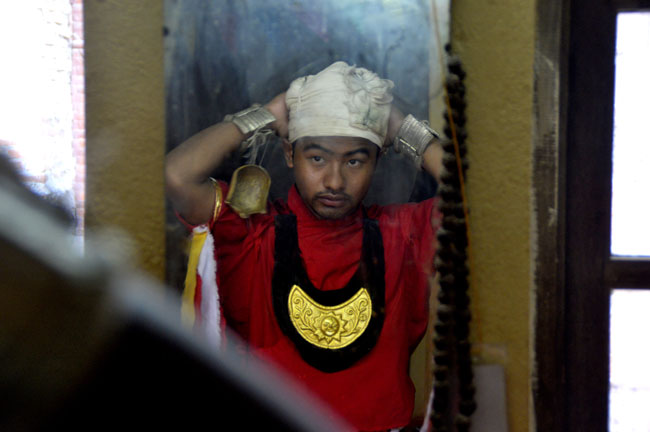
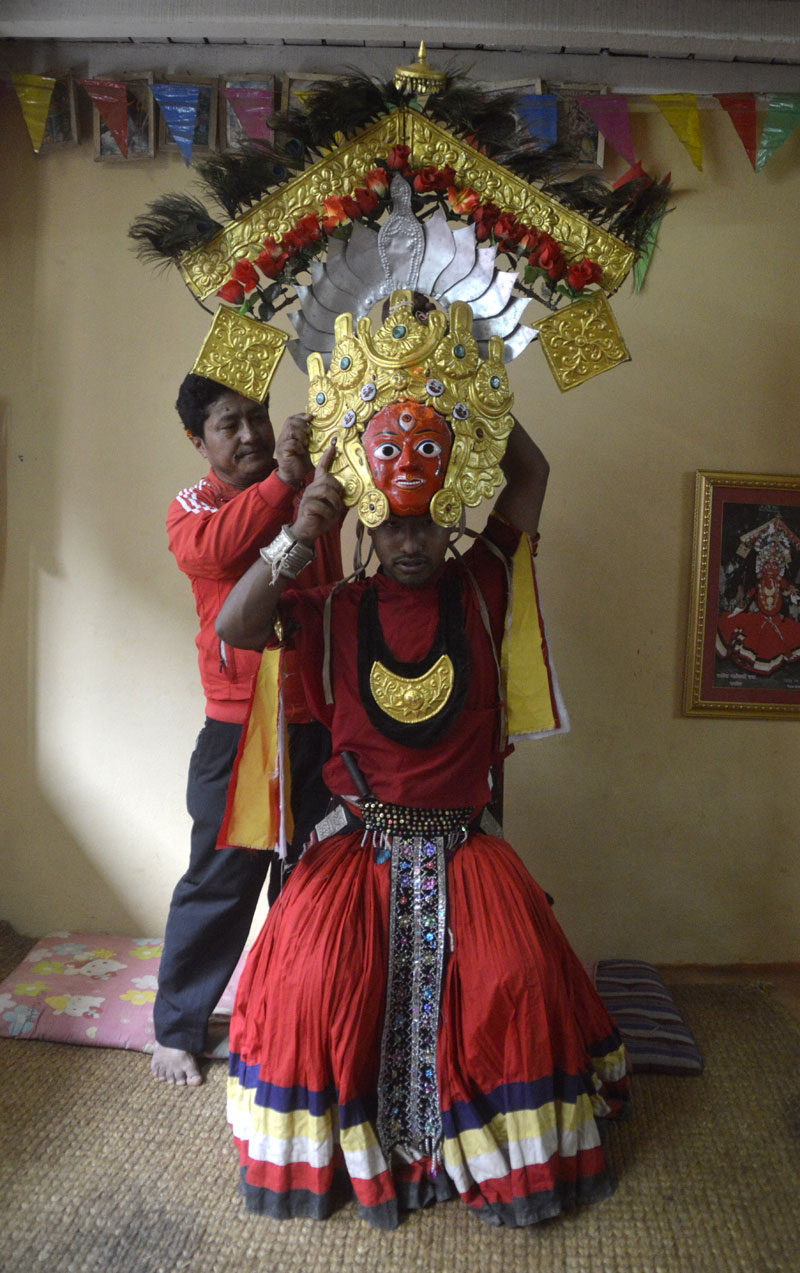
You May Like This
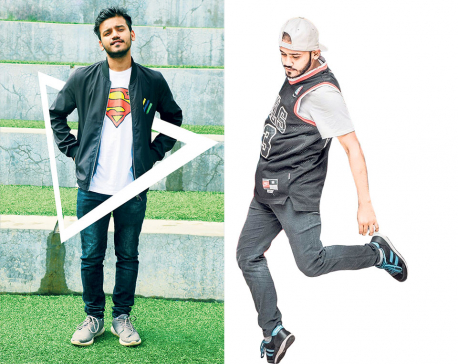
For the love of dancing
Mukesh Dhakal is your typical college boy. He goes to college, has a great time with his friends, studies when... Read More...
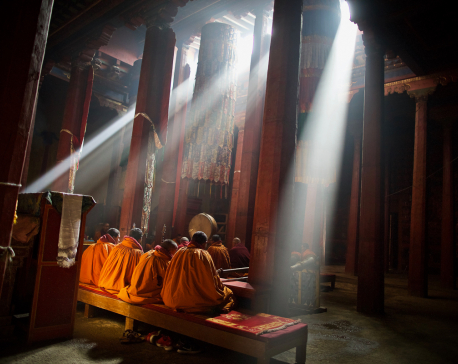
Nepal's stolen gods
Since the 1980s, authorities estimate thieves have plundered tens of thousands of Nepalese antiquities. ... Read More...

Dancing with the dragon
Dahal government hasn’t been able to handle the sensitivities of our northern neighbor with the seriousness the issue deserves ... Read More...
Just In
- Over 16,000 paragliding flights conducted in one year in Pokhara
- MoPIT prepares draft of National Road Safety Act, proposes rescue within an hour of an accident
- Light rainfall likely in hilly areas of Koshi, Bagmati, Gandaki and Karnali provinces
- Customs revenue collection surpasses target at Tatopani border, Falls behind at Rasuwagadhi border in Q3
- Rain shocks: On the monsoon in 2024
- Govt receives 1,658 proposals for startup loans; Minimum of 50 points required for eligibility
- Unified Socialist leader Sodari appointed Sudurpaschim CM
- One Nepali dies in UAE flood











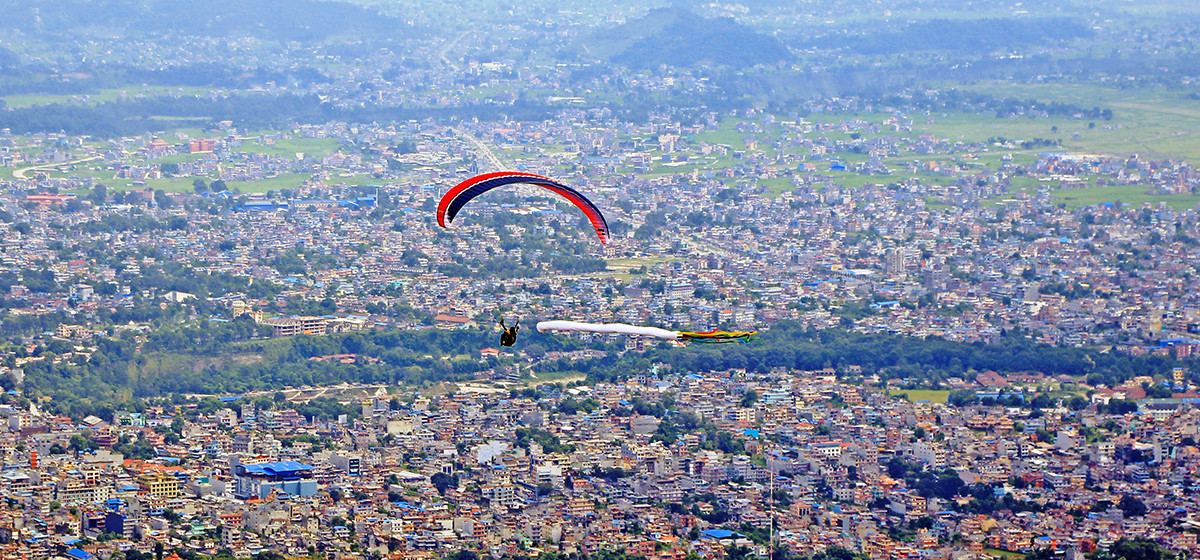
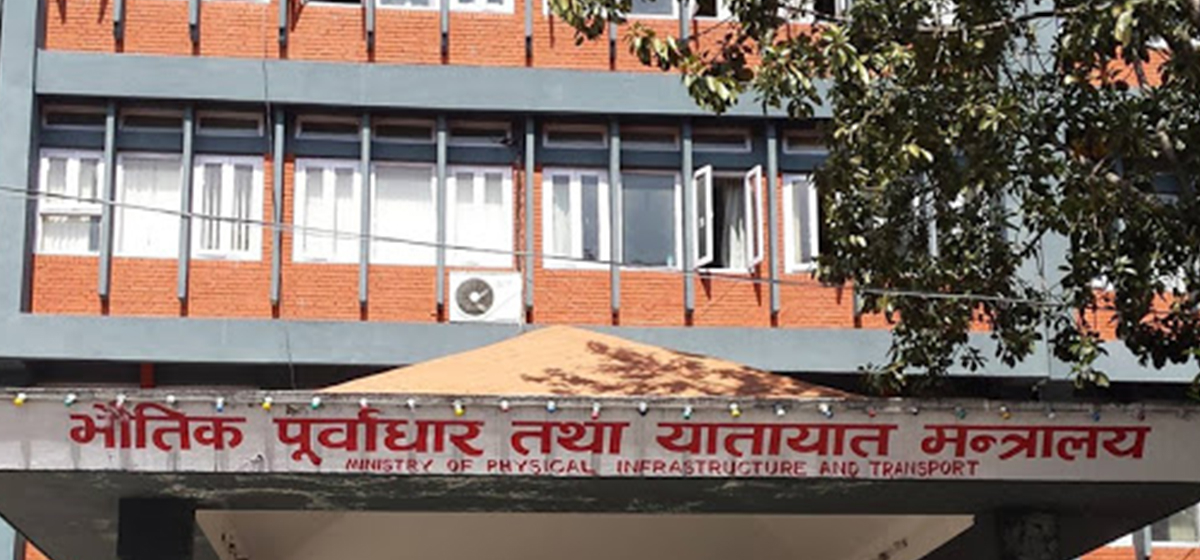





Leave A Comment